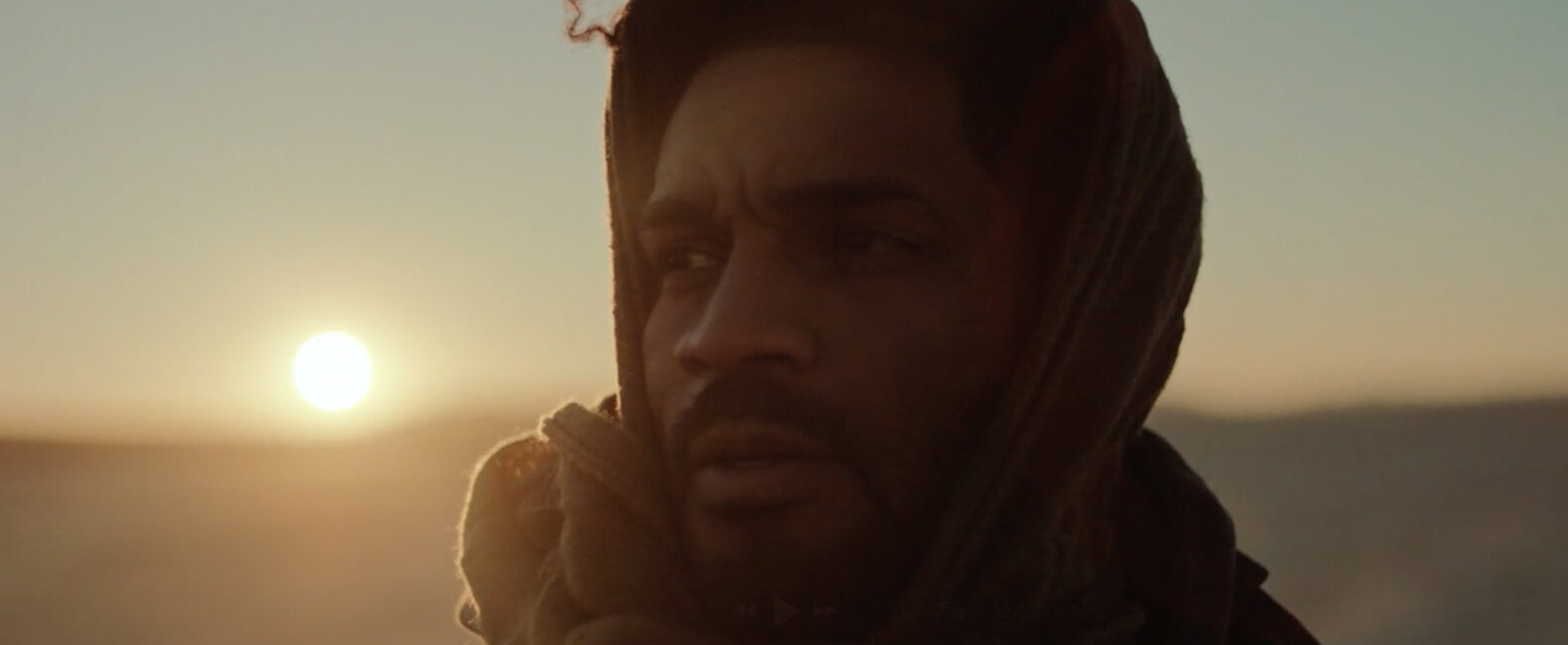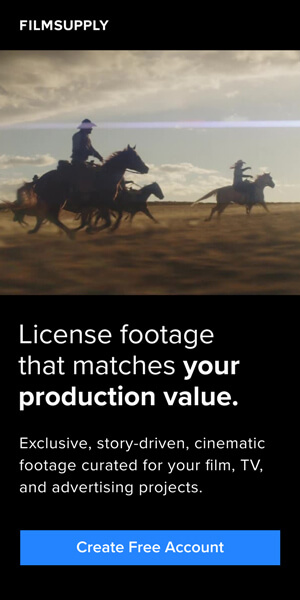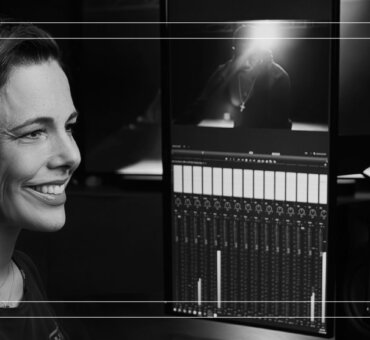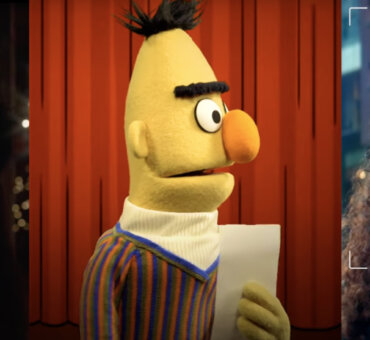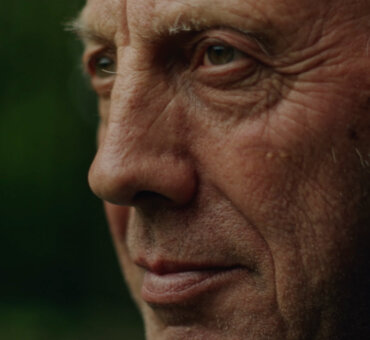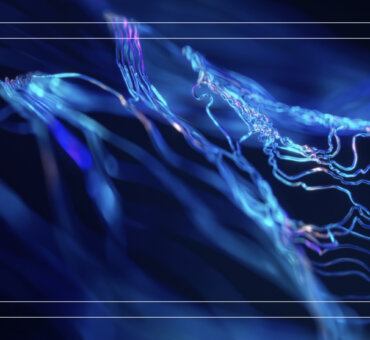As filmmakers, we’re always searching for our next lightbulb moment—something that sparks a concept that leads to a creative breakthrough. But an idea only marks the beginning of the journey to create something epic.
Take it from directors Mitchell Mullins and Nick Dean.
“The most challenging aspect of being a filmmaker is being able to put it all together,” Mullins says. “Many artists have great ideas, but the catalyst for our abilities lies in bringing our visions to life.”
It was a simple conversation that sparked the thrilling story behind Mullins’ and Dean’s post-apocalyptic spec ad, Carry Us. But it was their relentless dedication and pursuit of personal vision that helped reshape a concept into a concrete (and award-winning) reality.
Here’s what the co-directors have to say about the evolution of Carry Us, why it’s essential to create for yourself, and how writing transforms fleeting ideas into tangible work.
FILMSUPPLY: Was Carry Us your first co-directed film ever or just the first time you both co-directed with one another?
Mitchell Mullins: This was the first project we worked on together. I’ve co-directed a few pieces in the past, and I’ve always loved blending styles with other artists. Nick and I had been talking about collaborating for ages, saying, “We’ve got to do something together.”
Nick Dean: Mitchell and I go way back to the early days of the content creator community. We were working with different brands, trying to find our footing, and often helped each other out.

Eventually, we reached a point where we were ready to tackle something bigger. We thought, “What if we created a longer-form piece? What if we brought in something like a car as the focal point?” We wanted to explore what we could create without a strict timeline or limitations.
For about a year, we played around with ideas—writing, brainstorming, and building mood boards. It was the best creative collaboration I’ve ever experienced.
Nick Dean: Initially, we thought about using motorcycles. Cars weren’t even on the table at first.
Mitchell Mullins: Right, it started with motorcycles, then shifted to a different car entirely. We were experimenting, figuring out what was feasible. At one point, the project was going to be a short film.
Eventually, we refined it by asking, “What excites us the most? Where do our styles overlap the best?” That process led us to the final concept.
FILMSUPPLY: Was the post-apocalyptic aesthetic the chosen setting from the start? Or did the concept evolve as the filmmaking process progressed?
Nick Dean: From the beginning, the goal was clear: we wanted something post-apocalyptic, dark, moody, gritty, and action-packed.
Mitchell Mullins: A lot of it ties back to our childhood influences, like our love for Star Wars and epic, big-picture movies. Those inspirations helped shape the world of Carry Us. We aimed for an “undiscovered worlds” vibe, and everything we pulled for our mood boards reflected that dark, moody environment.
Nick Dean: I’ve been a huge Star Wars fan since I was a kid. When I was about six or seven, Episode III came out, and people were saying it might be the last Star Wars movie. I remember figuring out where George Lucas’ office was and writing him a letter.
About eight or nine months later, I got a typed letter from Lucasfilm.
It basically said, “Thanks for reaching out, but Star Wars is our legal property, so you can’t make a film.”
Even though it was a polite rejection, it stuck with me. That moment made me want to create something equally exciting, inspired by the things that psyched me up as a kid.

FILMSUPPLY: Carry Us is a passion project that was free from outside pressures of client demands, due dates, etc. What helped you maintain a standard of quality you could both be proud of?
Mitchell Mullins: Filmmaking is what we do every day—it’s our vocation and our work. But we’re always looking for ways to push the needle forward. Not every project gives you that chance, but when everything aligns, it’s like, “Let’s make the most of this opportunity and really challenge ourselves.”

Looking back, there are always those pivotal projects that elevate you as a filmmaker. They usually come from a mix of passion and curiosity—asking, “What could we achieve if we really applied ourselves here?”
Nick Dean: Passion projects like this are the ones where you want to fully immerse yourself. We drew from all these little moments and inspirations that really resonated with us. Then, when you start creating, you look at other people’s work and think, “I love what they did here—how can we make our own version of that?”
Once you start shaping your vision, you get 30% or 40% of the way there, and then you push to reach 80%, 90%. As you inch closer to that quality threshold, the excitement builds. You think, “Wow, this is what we’re aiming for,” and that momentum drives you to keep pushing further.
Mitchell Mullins: Exactly. There’s a compounding effect to the collaboration process, and seeing the result of that synergy was incredible.
Since Carry Us came out, Nick and I have had so many conversations that have sparked new project ideas. Even during production, we’d find something we loved and think, “What if we did this? Or this? Or that?”
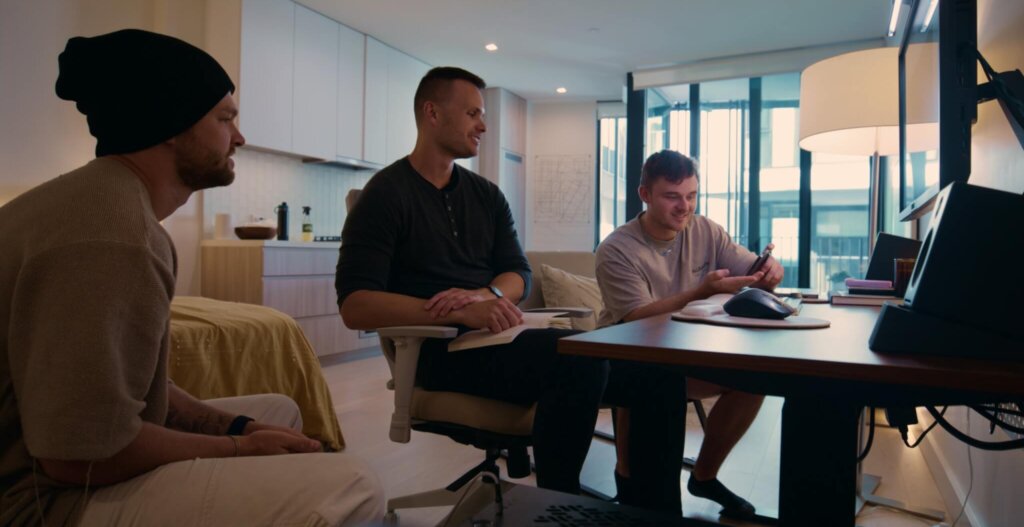
FILMSUPPLY: Talk to us about the logistics of your creative collaboration and scriptwriting for Carry Us. What did your process look like?
Nick Dean: This project took almost a year of discussions before it really took shape. It wasn’t a simple “Hey, let’s do this” kind of thing. We had long FaceTime calls, built treatments only to scrap them, and tried different approaches.
We spent a lot of time moodboarding and exchanging ideas. We wanted to make sure the concept itself was something we were genuinely excited about. A lot of people jump straight into filming—just hitting record and going—but we wanted to be intentional. We dedicated ourselves to long virtual and in-person sessions, really figuring out what made the idea work.
Mitchell Mullins: Yeah, we spent a lot of time hashing out these ideas. That constant back-and-forth helped refine the concept into what the final film became. We took the core ideas and kept evolving them.
We worked extensively on the story beats—figuring out what needed to happen and how the act structure would unfold, leading to the resolution. Those pillars gave us a solid launch point for everything that followed.
RELATED READS: Storytelling as a Craft: How to Transform Ideas into Thrilling Stories
FILMSUPPLY: On the set of Carry Us, what was the dynamic of your co-directing style?
Mitchell Mullins: We were on the same page throughout the project, and we leaned into each other’s strengths. One thing I admire about Nick’s work is his incredible eye for motion. He has a way of drawing out the energy of a scene, especially in automotive settings, with their dynamic movements and intense character emotions.

I tend to think more about the bigger picture—how the entire world of the story fits together.
Nick Dean: From the start, Mitchell and I had a natural synergy. We were always receptive to each other’s ideas, and there was never any butting of heads.
Coming from an editing background, we share the same “language,” which made it easier to adapt on set.
We could do the mental math of how the day was unfolding, adjusting to the inevitable chaos that comes with production.
Mitchell has this amazing ability to see beyond what’s practically in front of him and find ways to expand the world of the story.
Meanwhile, my background in vehicles—working with arm cars and similar setups—added a different perspective. We each brought our expertise to the table and learned from one another.
Mitchell Mullins: No matter how much you plan, you always have to pivot during production. But because of our shared background in editing and our ability to see the project all the way through, we had the same mindset.
That shared approach was key. Without it, there might have been conflicts. But I think all the time we spent in pre-production made the process smooth and fluid.
Honestly, I’m already itching for us to tackle another project together.
RELATED READS: 4 Elements of Receiving Creative Feedback
FILMSUPPLY: Besides Star Wars, where else did you draw inspiration from?
Nick Dean: I pulled inspiration from everything that shared the same tone. If you look at our mood boards, they’re massive. There are influences from Dune and I Am Legend vibes, among others.
But as the project evolved, so much changed from our original vision. There were countless versions of the story. It was like working with Play-Doh—every step closer to completion brought a complete shift in direction.
Mitchell Mullins: It felt like we were constantly bouncing between inspirations, from Star Wars to Dune or any other post-apocalyptic film. Then, at one point, we thought, “Wait, what if it was a car commercial instead?”
FILMSUPPLY: Talk about the biggest contributing factors that helped you craft such a bleak and barren world for Carry Us.
Nick Dean: Making a film is a daunting process, especially when it involves world-building. You’re creating a universe where everything has to follow the rules you establish. So, we focused on a few key elements: environment, wardrobe, and character motivation—what the character has access to and what he doesn’t. These became the pillars we leaned on to keep things grounded and cohesive.
Mitchell Mullins: It came down to localizing our efforts and focusing on a few scenes we could execute really well. Continuity was critical, especially with a world this expansive. My biggest concern was ensuring the audience couldn’t spot inconsistencies that might pull them out of the story.
Even with a simple setup, like our main character sitting in a room with a monitor in front of him, we wanted the environment to speak volumes. The emptiness of the space and its minimalism added depth to the world we were creating.
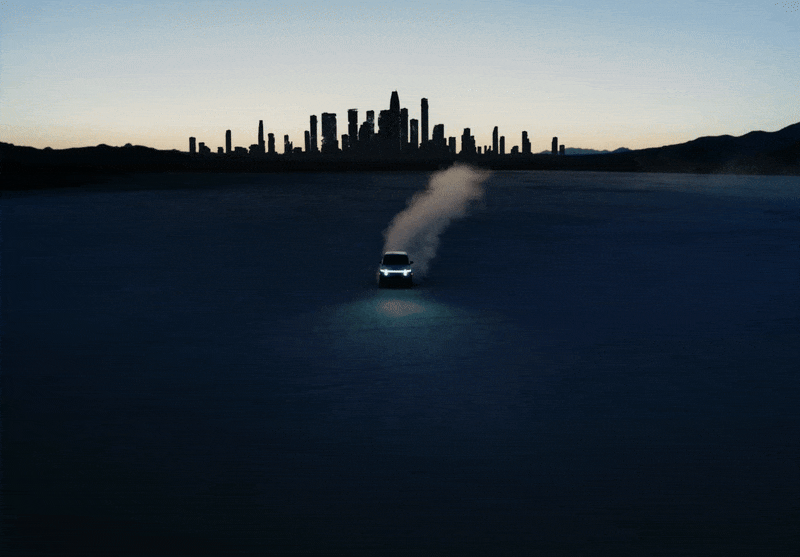
When we moved outdoors, it was about choosing our battles and deciding what was worth the time and effort to achieve the greatest impact. For example, where we placed the skyline wasn’t random; it connected the character to other scenes and gave a sense of continuity beyond just a desert setting.
Maintaining that consistency and knowing what didn’t need to be shown required a lot of effort, but it was essential to keeping the world believable.
FILMSUPPLY: What hurdles did you run into while you were on the set of Carry Us?
Nick Dean: Charging the car was a challenge. We were filming in locations without accessible charging ports, so that was a hurdle.
But honestly, the biggest challenge was financing the project ourselves. Despite that, it turned out to be a smooth two- or three-day production with an incredible team. Everyone believed in the vision and was fully committed to giving their all.
Mitchell Mullins: It really was seamless overall, and a lot of that came down to our planning. But it also speaks to the resourcefulness of the crew. Everyone had a strong sense of ownership and agency.
There was so much creative freedom throughout the process, and it truly was an all-hands-on-deck effort.
FILMSUPPLY: Which shot(s) or scene(s) required the most setup? Was there any difficulty planning the VFX or seeing exactly how a scene would unfold?
Mitchell Mullins: The main warehouse scene was the most complex setup. It features all the characters in front of the truck with an overhead light, which was entirely created with VFX—just a lightbox above.
The challenge was rigging a light in such a large space with tall ceilings and making it feel natural while flagging off the background. That took a lot of time, and then the VFX tied everything together.


Interestingly, this was the first scene we shot. The entire production lasted three days, but this was the first time we saw the car and actually put dust on it—called “Hollywood dust” or “magic dust.” It was so bad that it made us all sneeze!
In most car commercials, the car is spotless and pristine, but Nick and I wanted to take a different approach. We imagined the car had been sitting there for a hundred years, surviving in a post-apocalyptic world. It’s a counterintuitive choice, but it brings a fresh perspective to the film.
FILMSUPPLY: So why a spec ad? What motivated you to spend so much time and effort on a project not endorsed by the brand?
Mitchell Mullins: No one will give you permission to make the work you truly want to make. The best way to create something meaningful is to take charge of your own project.
In the film world, a spec ad offers a way to blend passion with a commercial element, which is especially valuable if you’re running a production company or trying to establish yourself as a director or DP. It’s a great stepping stone for your career.
But even outside of commercial work, making short films or personal projects with no commercial ties is a powerful way to showcase your skills. Ultimately, it’s about your ideas and your ability to execute them. If you can demonstrate that, you unlock a whole new world of opportunities.
Nick Dean: It’s crucial for directors to showcase their identity and unique vision. Specs and passion projects are the best way to stay true to who you are as a creator.
In many jobs, you end up serving a client’s vision, which can shape how you think and work, often steering you off course creatively. Spec ads offer a chance to return to your core, to reconnect with what drives you.

“Every filmmaker should experiment with spec ads and explore different creative variations to see what they can truly achieve.”
Nick Dean
FILMSUPPLY: What made Carry Us so special to you?
Nick Dean: I’m just so excited that this film resonated with people. We had so much fun making this, and we’re really proud of it. It was all made possible because of a great group of friends and belief in an idea. And it was so much fun to see it all the way through.
I hope every aspiring filmmaker or anyone who’s trying to do anything in film builds those true relationships with people and gives it a shot because we couldn’t be more thankful for everyone involved in coming together for our idea.
Footage from Carry Us
You can license footage from Carry Us, the post-apocalyptic spec ad from Mitchell Mullins and Nick Dean.
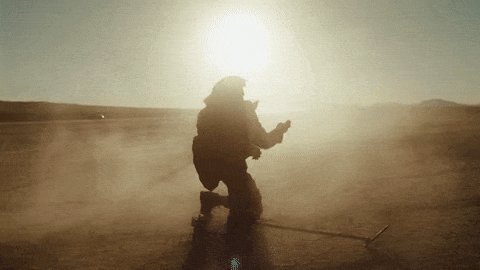
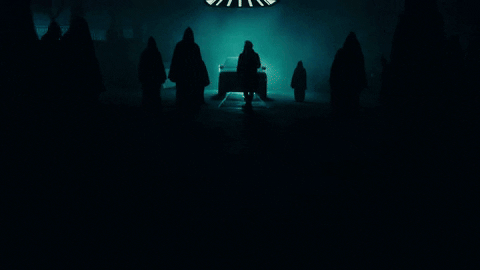
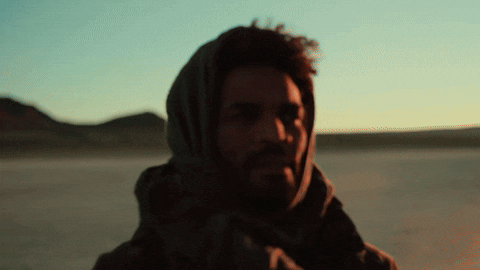
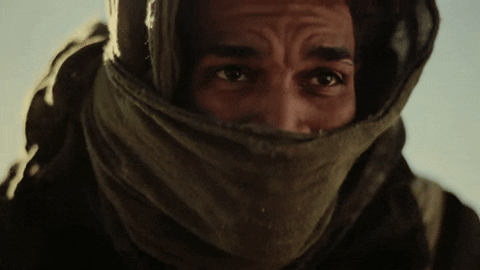
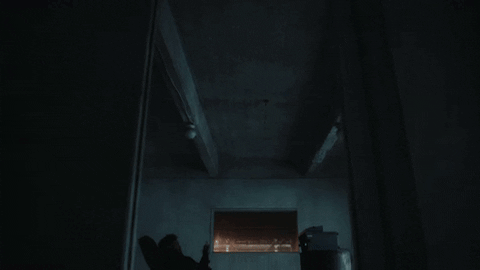
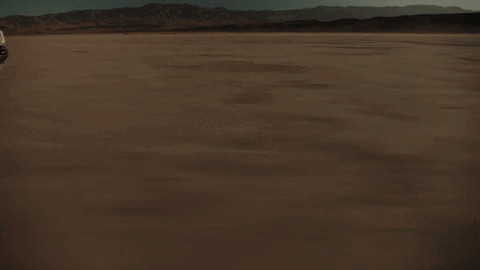
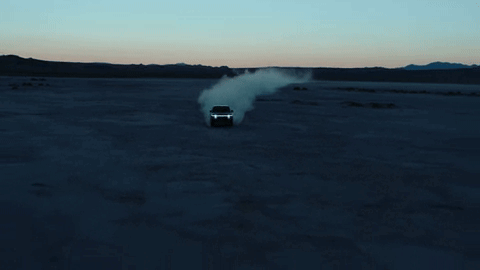
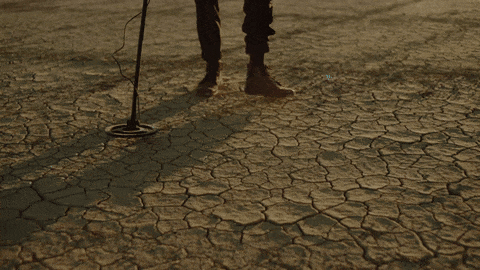
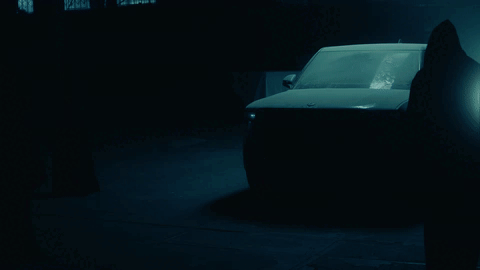
Check out all 170 clips from Carry Us, fully released and available to license: https://www.filmsupply.com/shoots/carry-us/20095
